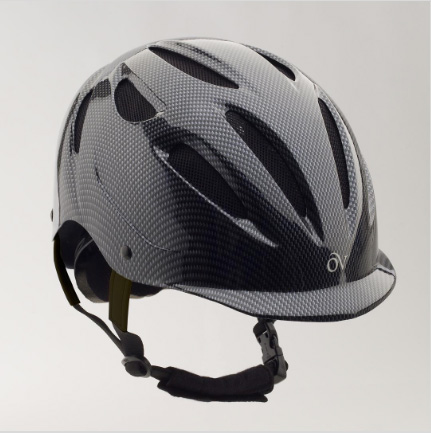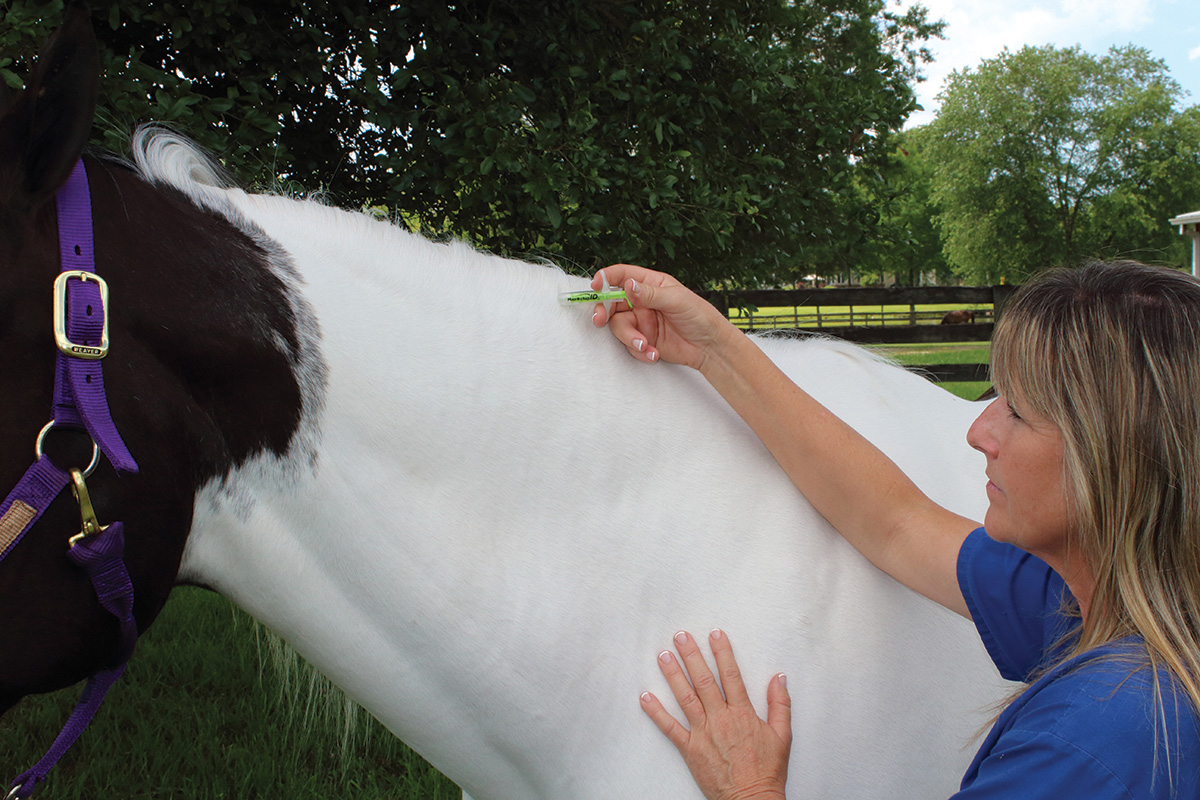DULUTH, Ga. (January 30, 2023) — A horse’s vital signs offer early clues into his overall health. Get to know your horse’s main vital signs and practice taking them. The earlier a potential issue is identified the better the chances for responding and preventing a larger issue from developing.
Temperature: 99 to 101.5 F
Like humans, horses are individuals and may have a slightly higher or lower resting temperature and it may vary with ambient temperature and exercise. Therefore, knowing your horse’s baseline is essential.
Take and record the horse’s temperature several times a month to establish what is “normal.” Exercise and weather can create fluctuations. Measure while the horse is at rest, after work, and in other common scenarios.
How to measure: Use a rectal thermometer and lubricant. Digital thermometers are available at local drug stores, tack stores, and farm supply stores. The inexpensive thermometer provides easy reading but requires batteries, which can be sensitive to cold weather. Check and change batteries as needed.
Mercury thermometers are another option but can be more challenging to read and aren’t readily available for purchase. The benefit is no batteries are required. With either model, you can attach a string to the end and clip it to the horse’s tail to avoid it getting lost.
What it means: A slightly elevated temperature can suggest a horse is fighting a mild infection or having an inflammatory reaction that could be the equivalent of a cold in humans. A mild fever after vaccination can be normal and just shows that the immune system is responding. Mild fevers can just be monitored while watching for any other clinical signs. If the fever persists and the horse stops eating, consult with a veterinarian about treatment with cold hosing or an NSAID.
“Bringing the fever down can help the horse resume eating and drinking but it’s important to remember that fevers have a purpose in terms of fighting infection so we don’t want to just mask them with drugs,” said Sarah Reuss, VMD, DACVIM, Equine Technical Manager, Boehringer Ingelheim.
Fevers that climb to 105 F or greater could suggest several different infections from Equine Herpesvirus to Potomac Horse Fever, influenza, etc.
“If your horse has an increased temperature, contact your veterinarian,” said Dr. Reuss. “They can guide you through the next steps based on the horse’s condition.”
Pulse: 28 to 44 beats per minute
The average pulse rate can vary based on the age and size of the horse. For example, a fit racehorse may have a resting pulse of 30, whereas a nervous pony may be closer to 40. Foals also have higher pulse rates at birth and through the first few months of life.
How to measure: Along the jawline and at the fetlock are the easiest places to locate a pulse. Place two fingers in either location and feel for pulsing. Count the pulsations for 15 seconds and multiply the result by four.
“If you have a stethoscope, you can listen for the pulse just behind the horse’s left elbow,” said Dr. Reuss. “Listen for a ‘lub-dub’ sound. Count for 15 seconds and then multiply by four.”
What it means: It’s normal for a horse to have an elevated pulse after exercise. However, if the horse has not worked or takes more than a few minutes to return to normal depending on the intensity of exercise, it’s time to call the veterinarian. High pulse rates can point to pain, dehydration, illness, and distress.
Respiration: 10 – 24 breaths per minute
How to measure: Count the number of breaths for 15 seconds. Watch the horse’s sides as he inhales and exhales. Again, multiply by four. Then, hold one hand or a mirror by the horse’s nostrils to feel for breath out of each nostril.
What it means: Horses in heavy work can take as many as 150 breaths per minute. In addition, heat, humidity, exercise, and fitness level can influence respiration rates. “Get to know how long it takes a horse to recover after exercise to establish a baseline for what is acceptable and to signal a potential issue,” said Dr. Reuss. “Continued rapid breathing can suggest respiratory disease, pain, or discomfort, and it is essential to work with your veterinarian.” Horses with fevers often have an increased respiratory rate as well, so be sure to check all vitals if you notice any one of them being abnormal.
3 additional vitals to know
In addition to T-P-R other physical clues can offer insight into a horse’s health.
Mucous membranes: Healthy tissues are pink and moist. These tissues are visible when the skin meets an opening on the body. The most common are the gums and the conjunctival sac of the eyes.
Capillary refill: This is how quickly blood returns to an area after applying pressure. This is best observed on the horse’s gums. Apply firm pressure to the gum and release. It should return to pink within one to two seconds.
Gut gurgles: Stand beside your horse and listen for intestinal sounds. Gurgling, growling, and rumbling-like noises indicate all is well. If it’s silent, the horse may be colicking or may have just not eaten for awhile.
“Knowing a horse’s vital signs make it possible to catch and diagnose a problem early, which allows for quick intervention,” said Dr. Reuss. “It’s always prudent to contact the horse’s veterinarian if they are off. Sharing the horse’s vital signs can help determine how quick the response must be and the next steps.”
About Boehringer Ingelheim Animal Health USA
Boehringer Ingelheim Animal Health is working on first-in-class innovation for the prediction, prevention, and treatment of diseases in animals. For veterinarians, pet owners, producers, and governments in more than 150 countries, we offer a large and innovative portfolio of products and services to improve the health and well-being of companion animals and livestock.
As a global leader in the animal health industry and as part of the family-owned Boehringer Ingelheim, we take a long-term perspective. The lives of animals and humans are interconnected in deep and complex ways. We know that when animals are healthy, humans are healthier too. By using the synergies between our Animal Health and Human Pharma businesses and by delivering value through innovation, we enhance the health and well-being of both.
Boehringer Ingelheim Animal Health has deep roots in the U.S. From a start in St. Joseph, Missouri, more than 100 years ago, it has grown to encompass seven sites. Boehringer Ingelheim Animal Health’s portfolio contains widely used and well-respected vaccines, parasite-control products and therapeutics for pets, horses and livestock including NexGard®, Heartgard®, Pyramid® + Presponse®, VAXXITEK®, Ingelvac CircoFLEX® and Prascend®.
Learn more about Boehringer Ingelheim Animal Health USA at bi-animalhealth.com ©2023 Boehringer Ingelheim Animal Health USA Inc., Duluth, GA. All Rights Reserved. US-EQU-0129-2022.




:quality(70)/cloudfront-eu-central-1.images.arcpublishing.com/thenational/UE43NNM6UZFQNEM6U2XZDKEVNI.jpeg)